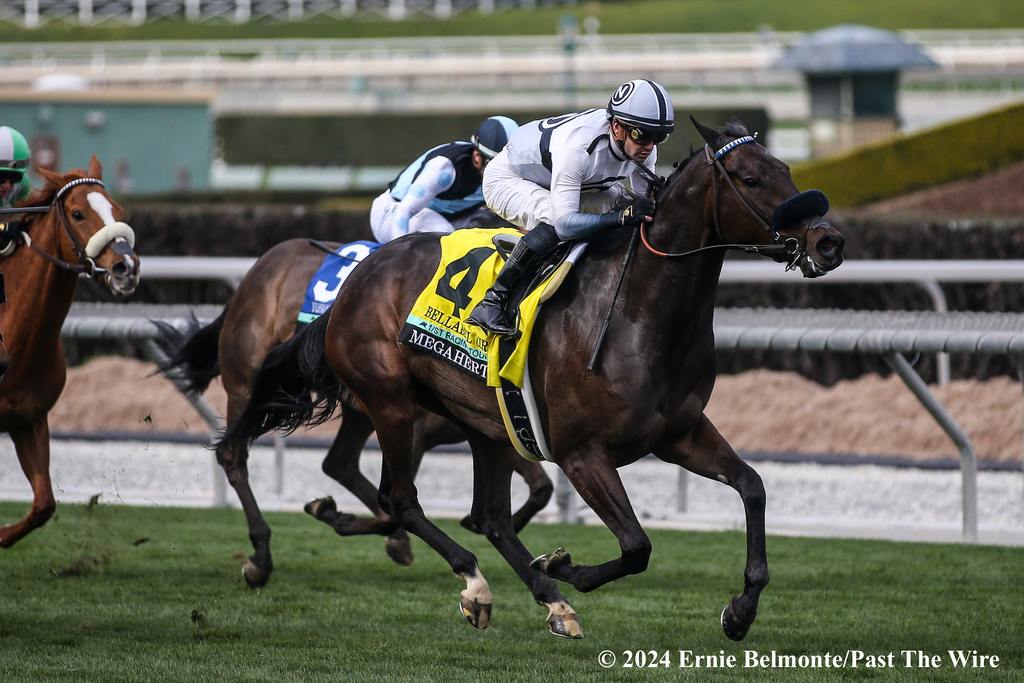
Basic rules
Horse racing is an ancient sport that has evolved over the years, but is still governed by basic rules. These rules ensure fair and safe competition for all participants, both foals and jockeys.
- The race is won by the horse that crosses the finish line first: The main objective of a foal race is for a horse and jockey to reach the finish line first. The first horse to achieve this is considered the winner of the race.
- The course must be completed in its entirety: For a horse to be considered a valid participant in the race, it must complete the entire course. This means that the horse and rider must pass all required marks and obstacles without shortcuts or violations.
- The race must be started from the starting stalls: The start of the race is generally from the starting stalls. Foals and riders are placed on a baseline and when the starting signal is sounded, all start the race. In exceptional situations, a flag may be used to start the race.
- All obstacles must be overcome: In some forms of competition, such as steeplechase and jump races, barriers and obstacles are added along the course. Riders must ensure that their foals safely jump over all these obstacles to continue in the race.
- False Start Situation: If a starter determines that a horse has started before the race has begun, a false start will be declared. In this situation, the foals must stop and restart the race from the starting stalls.
- Riders must ride safely and follow the course: Riders have the responsibility to ride safely and maintain control of their horses throughout the race. They must also follow the course and not deviate from it.
- Crossing the finish line: For a rider and his horse to be considered to have completed the race, they must cross the finish line. This may be determined by photographs or other time measurement systems to ensure accuracy in classification.
Betting rules
In addition to the competition rules, horse racing also has specific rules related to betting. These rules ensure that bets are settled in a fair and transparent manner. Here are some of the common betting rules:
- Final odds: Final odds are the last odds offered before the start of the competition. These odds are identical at all bookmakers, which means that customers can check their accuracy. Winnings are calculated using these final odds.
- Starting odds: Starting odds are the odds offered when the official list of participants of the competition is provided. These odds may vary before the final odds and offer customers the opportunity to earn higher winnings by betting early.
- Early odds: Early odds are odds offered well in advance of the event. These odds are usually higher than the final or initial odds, as more risk is taken by betting with less information.
- Settlement of bets: If no final odds are officially declared, all bets placed at final odds (CF) will be settled using the last odds offered. This ensures that customers are not disadvantaged if a final odds is not provided prior to the start of racing.
Additionally, for those interested in trying their luck and enhancing the thrill of horse racing, numerous online casinos provide a platform for betting on these events. Explore the latest odds and enjoy a dynamic betting experience at Wanted Win.
The importance of horses in racing
Foal racing is a fascinating sport that has gained popularity across the globe over the years. In these competitions, it is common to find different breeds of foals that stand out for their speed, endurance and specific skills.
One of the most recognised breeds is the thoroughbred. These racing colts are known for their exceptional elegance and speed. They have carefully selected genetics to ensure that they possess ideal physical qualities for competition. Thoroughbreds originated in Great Britain and have been bred specifically for on-track competition. They are agile, muscular and have incredible aerobic ability. This breed is popular in events such as the Kentucky Derby and the Grand National in the UK.
Another notable breed in the racing arena is the “quarter horse”. These colts are specialists in sprint races over short distances, especially 400 metres, hence their name. They tend to have robust and powerful musculature, which enables them to reach amazing speeds over short distances. Quarter horses are very popular in American horse racing competitions.
Arabian horses have also made their mark on the racing scene. These beautiful equines are characterised by their endurance, agility and elegance. They have a light but powerful body structure, which makes them great distance runners. Arabian horses often compete in long-distance competitions, such as the iconic Tevis Cup, a 160 km endurance competition in California, USA.
These are just some of the most common breeds in foal racing, but there are many other breeds that also participate in this exciting sport. Each breed has its own unique characteristics and abilities, providing a wide variety of exciting competitions on the track.
Training and care of racehorses
Competition horses require rigorous care and training to ensure their welfare and maximise their performance on the track. These programmes focus not only on the horse’s physical preparation, but also on its general health and well-being. Here are some key aspects of racehorse training and care:
- Physical preparation: racehorse foals go through an intense physical training programme to develop strength, endurance and speed. This includes regular exercise sessions on the track, gallops and speed training. They are also given treadmill work sessions to strengthen their muscles and improve their cardiovascular endurance. The training is based on a combination of aerobic and anaerobic work to improve the horse’s ability to run efficiently over different distances.
- Balanced nutrition: Proper nutrition is critical to a racehorse’s performance. Equine care professionals develop specific diets based on the horse’s individual needs, considering age, weight, activity level and health conditions. Racehorses are usually fed a diet rich in high-quality forage, vitamin and mineral supplements and a precise amount of grains and concentrates to meet their energy needs.
- Veterinary care: Racing foals are subjected to strict veterinary care to maintain their health and prevent injuries. They are regularly given thorough examinations, including medical check-ups, blood tests and doping tests. Vaccination and deworming protocols are also followed to protect the horse from disease. In case of injury or illness, appropriate medical treatment and rehabilitation is provided to ensure full recovery and well-being.
- Rest and recuperation: Rest and recovery are fundamental aspects in the care of competition horses. After intense training sessions or competitions, foals need time to recover and allow their muscles and joints to repair. Trainers and handlers provide adequate rest periods and gentler fitness programmes to avoid exhaustion and prevent overtraining injuries.
Importantly, the care and training of competition foals is done in close collaboration with professionals, such as trainers, veterinarians and equine nutritionists, who work as a team to ensure the horses’ optimal health and performance. All this is done with the aim of keeping the foals in the best possible condition and enabling them to compete at the highest level in races.
The physical characteristics and skills needed in a racehorse
To compete in high-level competition, a horse must have certain physical characteristics and specific skills. These qualities play a crucial role in its performance and ability to excel on the track. Here are some important characteristics in a competition horse:
- Speed: Speed is one of the most important qualities in a competition horse. He must have a long, powerful stride, strong musculature and a light body structure that allows him to move quickly. Racehorses are trained to develop their maximum speed over short or long distances, depending on their speciality.
- Endurance: In addition to speed, endurance is essential in a racehorse, especially for long distance events. The horse must have an efficient cardiovascular system and adequate lung capacity to keep him fit throughout the race. This implies a good aerobic capacity and the ability to recover quickly after intense exertion.
- Agility: Agility is another necessary skill for a racehorse. He must be able to change direction quickly, negotiate obstacles and maintain balance to adapt to changing conditions on the track. Excellent coordination and a strong bone structure are important to ensure stability and prevent injury.
- Temperament: A good racing colt must have the right psychological disposition. He must be courageous, focused and willing to compete. A horse that is calm and not easily frightened can remain calm and maintain his focus during competition. It is also important that the horse has a good attitude and a trusting relationship with its rider.
- Intelligence: Intelligence plays an important role in the success of a competition horse. He must be able to learn and adapt to different situations on the track. The ability to make quick decisions in the middle of a race can make the difference between winning and losing. An intelligent horse is able to understand and follow its rider’s instructions and respond appropriately to different stimuli.
These physical characteristics and skills needed in a competition horse are the result of genetics, training, care and experience on the track. Breeders and trainers constantly seek to improve these skills in foals through selective breeding and appropriate training programmes. A balance between these qualities is essential for a horse to be fit to compete in top level races and excel on the track.
Types of Horse Racing
Types of horse racing can be classified according to several criteria:
By type of terrain:
- Galloping horse races: These are the most common and take place on a smooth track. These animals can run at a gallop, which is their natural speed.
- Trotting horse races: These are held on a special track with marked lanes. The horses run at a trot, which is a slower movement than the canter.
- Steeplechase races: These are held on a special track with obstacles. Horses must jump over obstacles to complete the race.
- Cross-country races: These take place on natural terrain, with natural and artificial obstacles. Horses must overcome these obstacles to complete the race.
By race distance:
- Short distance races: They have a distance of up to 800 metres.
- Medium distance races: They have a distance of 800 to 2,000 metres.
- Long distance races: They have a distance of more than 2,000 metres.
By breed of horse:
- Thoroughbred races: These are the most prestigious and are held with thoroughbred horses. These horses are bred to race and are the fastest in the world.
- Other breeds: These races are held with horses of other breeds, such as Arabians, Quarter Horses or Thoroughbreds.
By type of equipment:
- Saddle races: These are the most common and are held with horses with a jockey.
- Harness races: These are held with horses in a carriage or cart.
Horse racing is a popular sport all over the world and can be very exciting. Thoroughbred races are especially popular and attract large crowds.



